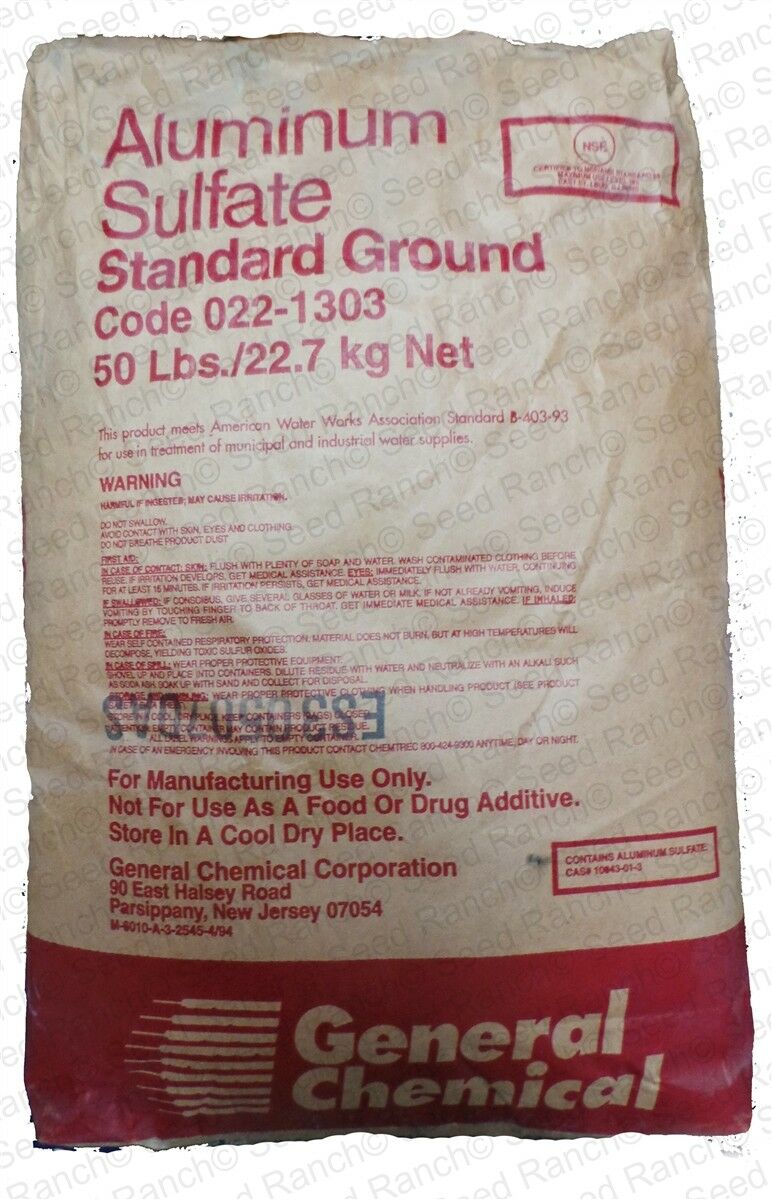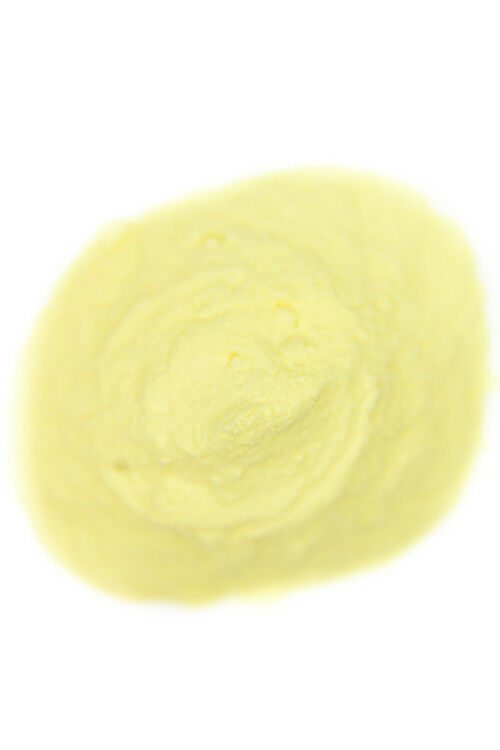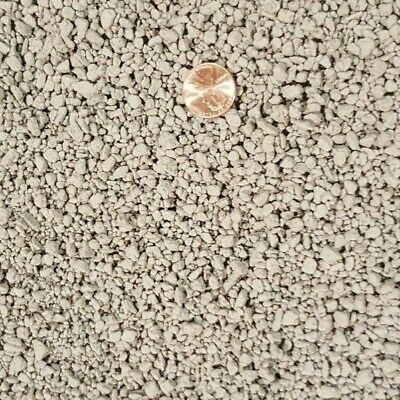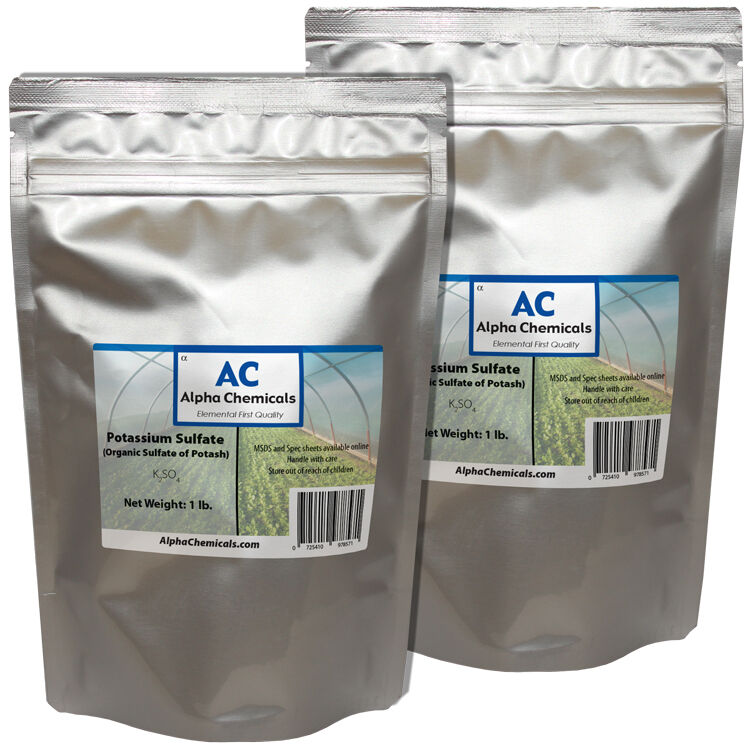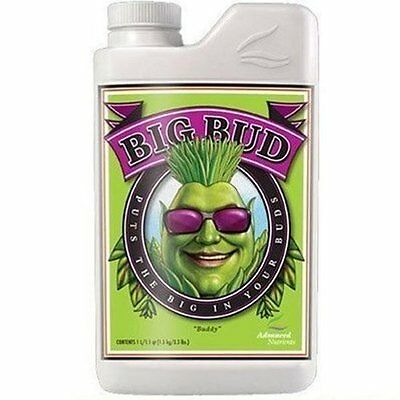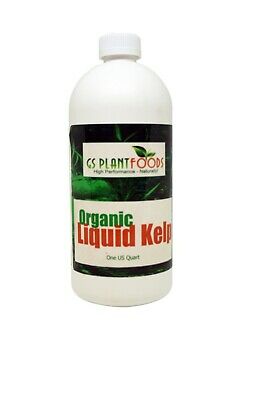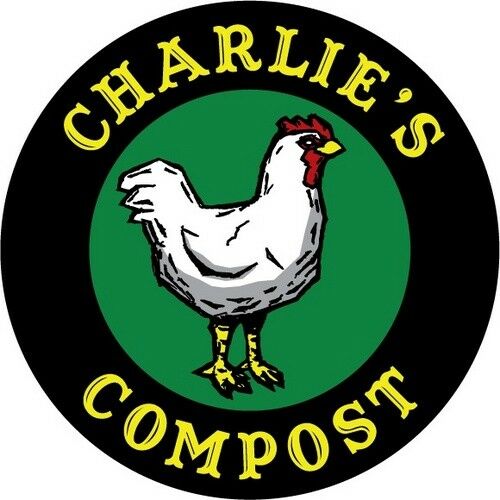-40%
Ecological birch tar (50 ml) Repels all pests.
$ 10.4
- Description
- Size Guide
Description
ą×ą┤ąĖąĮ ą┐ą░ą║ąĄčé čüą╝ąŠą╗čÅąĮąŠą╣ čüą╝ąŠą╗čŗ (50 ą╝ą╗), ą▒čāčéčŗą╗ą║ą░ ą┐ą╗ą░čüčéąĖą║ą░, ą┤ąĄą╣čüčéą▓ąĖč鹥ą╗čīąĮą░čÅ ą┤ąŠ 2023 ą│ąŠą┤ą░.ąśąĘą│ąŠč鹊ą▓ą╗ąĄąĮą░ ŌĆŗŌĆŗ02. 2020 ą│.
ąōą░čĆą░ąĮčéąĖą╣ąĮčŗą╣ čüčĆąŠą║ čģčĆą░ąĮąĄąĮąĖčÅ 3 ą│ąŠą┤ą░.
ąĪčĆąŠą║ ą│ąŠą┤ąĮąŠčüčéąĖ ąĮąĄ ąŠą│čĆą░ąĮąĖč湥ąĮ.
ąæąĄčĆąĄąĘąŠą▓čŗą╣ ą┤ąĄą│ąŠčéčī ą▓ čüą░ą┤ąŠą▓ąŠą┤čüčéą▓ąĄ ąĖ čüą░ą┤ąŠą▓ąŠą┤čüčéą▓ąĄ - ą┤ąĄą╣čüčéą▓ąĖč鹥ą╗čīąĮąŠ ąĮąĄąĘą░ą╝ąĄąĮąĖą╝čŗą╣ ą┐ąŠą╝ąŠčēąĮąĖą║!
ą×ąĮ čŹčäč乥ą║čéąĖą▓ąĮąŠ ą┐ąŠą╝ąŠąČąĄčé ą▓ą░ą╝ čüą┐čĆą░ą▓ąĖčéčīčüčÅ čü ą╝ąĮąŠąČąĄčüčéą▓ąŠą╝ ą▓čĆąĄą┤ąĖč鹥ą╗ąĄą╣ ąĖ ą▒ąŠą╗ąĄąĘąĮąĄą╣ čüą░ą┤ą░ ąĖ ąŠą│ąŠčĆąŠą┤ą░, ą┐čĆąĖ čŹč鹊ą╝ ą┐čĆą░ą║čéąĖč湥čüą║ąĖ ąĮąĄ ąĮą░ą║ą░ą┐ą╗ąĖą▓ą░čÅčüčī ą▓ čéą║ą░ąĮčÅčģ čĆą░čüč鹥ąĮąĖą╣ ąĖ ąĮąĄ ą┐čĆąĖčćąĖąĮčÅčÅ ą▓čĆąĄą┤ą░ č湥ą╗ąŠą▓ąĄą║čā.
ąæąĄčĆąĄąĘąŠą▓čŗą╣ ą┤ąĄą│ąŠčéčī - ąĮą░čéčāčĆą░ą╗čīąĮčŗą╣ ąĖ ą▒ąĄąĘąŠą┐ą░čüąĮčŗą╣ ą┐čĆąŠą┤čāą║čé, ą║ąŠč鹊čĆčŗą╣ ą┤ą░ą▓ąĮąŠ čāčüą┐ąĄčłąĮąŠ ą┐čĆąĖą╝ąĄąĮčÅąĄčéčüčÅ ą▓ ą┤ąŠą╝ą░čłąĮąĄą╝ čģąŠąĘčÅą╣čüčéą▓ąĄ, ąĮą░čĆąŠą┤ąĮąŠą╣ ą╝ąĄą┤ąĖčåąĖąĮąĄ, ą║ąŠčüą╝ąĄč鹊ą╗ąŠą│ąĖąĖ, čüą░ą┤ąŠą▓ąŠą┤čüčéą▓ąĄ ąĖ ąŠą│ąŠčĆąŠą┤ąĮąĖč湥čüčéą▓ąĄ ą▒ą╗ą░ą│ąŠą┤ą░čĆčÅ ą╝ąĮąŠą│ąŠčćąĖčüą╗ąĄąĮąĮčŗą╝ ą┐ąŠą╗ąĄąĘąĮčŗą╝ čüą▓ąŠą╣čüčéą▓ą░ą╝ (ą░ąĮčéąĖčüąĄą┐čéąĖč湥čüą║ąĖą╝, ą┐čĆąŠčéąĖą▓ąŠą┐ą░čĆą░ąĘąĖčéą░čĆąĮčŗą╝, ą┐čĆąŠčéąĖą▓ąŠą╝ąĖą║čĆąŠą▒ąĮčŗą╝).
ąÆ ąĄą│ąŠ čüąŠčüčéą░ą▓ ą▓čģąŠą┤čÅčé čüą╝ąŠą╗čŗ, ą┐ą░čĆą░čäąĖąĮ, ąŠčĆą│ą░ąĮąĖč湥čüą║ąĖąĄ ą║ąĖčüą╗ąŠčéčŗ, čäąĖč鹊ąĮčåąĖą┤čŗ, ą┐čĆąĖčĆąŠą┤ąĮčŗąĄ ą░ąĮčéąĖčüąĄą┐čéąĖą║ąĖ (č乥ąĮąŠą╗), ą│ą▓ą░čÅą║ąŠą╗ ...
ą¤čĆąĖą╝ąĄąĮąĄąĮąĖąĄ ą▒ąĄčĆąĄąĘąŠą▓ąŠą│ąŠ ą┤ąĄą│čéčÅ ąĮą░ čāčćą░čüčéą║ąĄ, ą┐ąŠ čüčĆą░ą▓ąĮąĄąĮąĖčÄ čü ąŠą▒čŗčćąĮčŗą╝ąĖ ą┐ąĄčüčéąĖčåąĖą┤ą░ą╝ąĖ, ąĖą╝ąĄąĄčé ą╝ą░čüčüčā ą┐čĆąĄąĖą╝čāčēąĄčüčéą▓:
ŌĆó ą┐čĆąĄą┐ą░čĆą░čé ą▒ąĄąĘąŠą┐ą░čüąĄąĮ ą┤ą╗čÅ č湥ą╗ąŠą▓ąĄą║ą░;
ŌĆó čĆą░ą▒ąŠčéą░ąĄčé ą┐čĆąŠčéąĖą▓ ą▒ąŠą╗čīčłąŠą╣ ą│čĆčāą┐ą┐čŗ ą▓čĆąĄą┤ąĖč鹥ą╗ąĄą╣ čüą░ą┤ą░ ąĖ ąŠą│ąŠčĆąŠą┤ą░ - ąŠčé ą╝ą╗ąĄą║ąŠą┐ąĖčéą░čÄčēąĖčģ ą┤ąŠ ąĮą░čüąĄą║ąŠą╝čŗčģ;
ŌĆó ąĮąĄ ą▓čŗąĘčŗą▓ą░ąĄčé ą┐čĆąĖą▓čŗą║ą░ąĮąĖčÅ čā ąĮą░čüąĄą║ąŠą╝čŗčģ;
ŌĆó ąĮąĄ čāąĮąĖčćč鹊ąČą░ąĄčé ą▓čĆąĄą┤ąĖč鹥ą╗ąĄą╣, ą░ č鹊ą╗čīą║ąŠ ąŠčéą┐čāą│ąĖą▓ą░ąĄčé ąĖčģ, čćč鹊 ąŠčüąŠą▒ąĄąĮąĮąŠ ą▓ą░ąČąĮąŠ ą▓ čüą╗čāčćą░ąĄ čü ą╗ąĄčüąĮčŗą╝ąĖ ą╝ą╗ąĄą║ąŠą┐ąĖčéą░čÄčēąĖą╝ąĖ, ┬½ąĮąĄąČąĄą╗ą░č鹥ą╗čīąĮčŗą╝ąĖ┬╗ č鹊ą╗čīą║ąŠ ąĮą░ ą┐čĆąĖčāčüą░ą┤ąĄą▒ąĮąŠą╝ čāčćą░čüčéą║ąĄ;
ŌĆó does not require complex equipment for use and even self-manufacturing (see below);
ŌĆó can be used at once in several ways (including without contact with the plant itself, so as not to have a negative impact on it);
ŌĆó has a long protective effect - from three to four weeks to a full season of vegetation.
1. Birch tar from the Colorado beetle, the solution is prepared as follows: in 10 liters of warm water, 10 ml (2 tsp) of tar and 50 g of laundry soap are dissolved. They can be sprayed with plants (before flowering, during the emergence of buds and during intensive flowering), or drench the bushes, as well as the soil in the interrow rows, until the leaves form a moist film.
2. Birch tar from the bear-from the tar tar will help to save your plants in several ways.
The first is dressing seed and planting materials - for example, lubricating tubers with undiluted drug.
The second way is to spray the already raised plants with the above-described tar soap solution (soap acts as an adhesive here).
3. Birch tar from moles (hamsters, marmots)
Banish from the site of moles, hamsters, marmots and other normal mammals can also be variously. For example, by plugging all the discovered entrances into their burrows with pieces of cloth, abundantly impregnated with undiluted tar, and falling asleep on top of the earth. For such impregnation, a tar-oil mixture (3 parts of tar to 1 part of vegetable oil) can be used. It is better to start all these activities from early spring, in the summer it may be too late.
Another way - to drive around the site at a distance of 3-4 m from each other are small (about 20 ├Ś 4 cm) wooden pegs, abundantly oiled in the lower part of the tar. If necessary, they can from time to time dig up and update the "fragrant" treatment.
4. Birch tar from hares (mice, voles)
For the protection of trees and shrubs from rodents like mice and hares, autumn mulching of the plant's trunk circles with sawdust impregnated with tar tar (1 tbsp of tar per 10 liters of water) helps, and autumnal whitewash of the trunks and lower branches with a special solution (10 liters of fresh manure, 1 kg of finished whitewash and 3 tbsp of tar to dilute with water to the consistency of thick yogurt).
5. Birch tar from the onion fly
To get rid of the onion fly's attention, planting material of onion and garlic is literally half an hour before sowing it is recommended to soak in tar (1 teaspoon of tar per 1 liter of water).
After sprouting sprouts, it is also worthwhile to shed the rows of these plants with a solution prepared from 10 liters of water, 30 g of soap and 1 tablespoon. tar, repeating the procedure again 10-15 days later.
Also helps mulching beds with sawdust impregnated in tar (see the preparation scheme above).
6. Birch tar from cabbage fly
To combat cabbage fly on crucifers (radish, cabbage, turnip, horseradish, etc.), a tar solution (1 tablespoon of tar per 10 liters of water) is used, which is spilled with the filthy beds covered with sawdust. The procedure is carried out in the early spring and update the layer of mulch in early August.
7. Birch tar oil from sea buckthorn fly
Damaging the planting of sea buckthorn, the fly can also be scared off by the smell of birch tar. To do this, inside a bush suspend small containers with him or nearby drive pegs, wrapped in rags soaked in tar.
8. Birch tar from carrot and leaf block
It also helps carrots to save themselves from a carrot fly and a leaf block that also does not like its smell.
The recipe you already know - 10 liters of warm water + 1 tablespoon. birch tar. This solution is watered on previously moistened soil carrot beds twice a season (in July and August). If the invasion of insects is large, you can shed the beds a couple of times, and also spray - the above solution, then add 20-30 g of soap chips as an adhesive
9. Birch tar from a sprout fly
The treatment with the above described solution and from the sprout fly on all pumpkin cultures (cucumbers, zucchini, pumpkin, squash) helps. Against this pest, vegetable shoots are shed by solution.
10. Birch tar from sawfly
There are several species of sawfly (gooseberry, cherry, etc.), damaging a variety of plants: white and red currants, gooseberries, cherries, pears, plums, apple trees. However, all these pests do not tolerate the smell of tar, so they can be successfully combated with this tool.
Bushes 3-4 times per season sprayed with the following mixture: in 1 liter of boiling water dissolve 100 g of grated laundry soap, half a glass of ash and 2 tablespoons. tar, dilute mixture of 5 liters of warm water.
Trees also have to be sprinkled several times a season (at the beginning of leaf blossoming, and then, if necessary, at intervals of a week) with a solution already familiar to you: 10 liters of water, 1 tablespoon. birch tar, 30 g of soap.
11. Birch tar from the wireworm
Potatoes, carrots, beets, radishes and other root crops must be protected from wireworms, including it can be done with the help of tar.
In advance, you can etch seed for 40-50 minutes in tar (1 tbsp of tar to 10 l of water) and moisten the holes before the planting with the same solution. Plants grown from seeds are simply watered with this solution several times a season at intervals of 2-3 weeks.
12. Birch tar from aphids
From aphids, copious spraying of plants with tar solution a couple of times per season with an interval of about a month helps.
The solution is prepared as follows: 50 g of tar soap is ground, dissolved in 1 liter of boiling water and stirred. After complete dissolution, 1 tsp is added. tar and another 20 liters of water.
13. Birch tar from the ants
If you already mentioned the aphids, just remember and its almost constant companions - ants, against which tar also helps to fight.
Trees, on which the ants "graze" aphids, are abundantly lubricated with undiluted tar on the trunk or wrapped with rags soaked in it - constructing such a peculiar hunting belt. If the ants settled right in your garden, you can pour a few milliliters of chemist's tar to the top of the anthill - insects just do not like it, and they are more likely to leave the inhospitable site.
14. Birch tar from spider mites
If you notice signs of a spider mite on your plants, treat these places with a soapy tar solution (10 liters of warm water + 10 ml (2 tsp) of tar + 50 grams of laundry soap), paying special attention to the underside of the leaves .
15. Birch tar from cabbage whitewash
ąŚąĮą░ą║ąŠą╝čŗą╣ ą▓čüąĄą╝ ą║čĆąĄčüčéčīčÅąĮą░ą╝-č乥čĆą╝ąĄčĆą░ą╝ ą║ą░ą┐čāčüčéą░-ą▒ą░ą▒ąŠčćą║ą░ (ą▒ąĄą╗ąŠą║ąŠčćą░ąĮąĮą░čÅ ą║ą░ą┐čāčüčéą░) ą╗ąĄą│ą║ąŠ ąŠčéą┐čāą│ąĖą▓ą░ąĄčé ąŠčé ą┐ąŠčüą░ą┤ąŠą║ ąĘą░ą┐ą░čģąŠą╝ čüą╝ąŠą╗čŗ.
ą¦č鹊ą▒čŗ čüą┤ąĄą╗ą░čéčī čŹč鹊, čĆą░čüą┐ąŠą╗ąŠąČąĖč鹥 ą▓ čüą░ą┤ąŠą▓čŗčģ ą║ąŠą╗čŗčłą║ą░čģ, ąĘą░ą▓ąĄčĆąĮčāčéčŗčģ ąĮą░ ą║ąŠąĮčåą░čģ čéčĆčÅą┐ą║ą░ą╝ąĖ, čüą╝ąŠč湥ąĮąĮčŗą╝ąĖ ą▓ ąĮąĄčĆą░ąĘą▒ą░ą▓ą╗ąĄąĮąĮąŠą╣ ą▒ąĄčĆąĄąĘąŠą▓ąŠą╣ čüą╝ąŠą╗ąĄ.
ąÜčĆąŠą╝ąĄ č鹊ą│ąŠ, ą║čĆąŠą▓ą░čéąĖ ą╝ąŠą│čāčé ą▒čŗčéčī čĆą░ąĘą╗ąŠąČąĄąĮčŗ ą┐čĆąŠą┐ąĖčéą░ąĮąĮčŗą╝ čĆą░čüčéą▓ąŠčĆąŠą╝ čüą╝ąŠą╗čŗ čüą╝ąŠą╗čŗ čüą╝ąŠą╗ąŠą╣ - čŹč鹊 ą┐ąŠą╝ąŠąČąĄčé ąĖ ą┤čĆčāą│ąĖą╝ ąĮą░čüąĄą║ąŠą╝čŗą╝-ą▓čĆąĄą┤ąĖč鹥ą╗čÅą╝.
16. ąæąĄčĆąĄąĘąŠą▓ą░čÅ čüą╝ąŠą╗ą░ ąĖąĘ ą║čĆčŗąČąŠą▓ąĮąĖą║ą░
ąÜčĆčŗąČąŠą▓ąĮąĖą║, ą║ąŠč鹊čĆčŗą╣ ą▓čĆąĄą┤ąĖčé ąĘą░čĆąŠčüą╗čÅą╝ ą║čĆčŗąČąŠą▓ąĮąĖą║ą░ ąĖ čüą╝ąŠčĆąŠą┤ąĖąĮčŗ, ą░ą║čéąĖą▓ąĮąŠ ą┐ąŠą▓čĆąĄąČą┤ą░ąĄčé čÅąĖčćąĮąĖą║ąĖ čŹčéąĖčģ čĆą░čüč鹥ąĮąĖą╣.
ą¦č鹊ą▒čŗ ą▒ąŠčĆąŠčéčīčüčÅ čü ąĮąĖą╝ ą┤ąŠ čåą▓ąĄč鹥ąĮąĖčÅ, čÅą│ąŠą┤ąĮčŗąĄ ą║čāčüčéčŗ čüą╗ąĄą┤čāąĄčé ą┐ąŠčüčŗą┐ą░čéčī čüą╝ąŠą╗ąŠą╣ (1 čüčé.ą╗. ą┤ąĄą│čéčÅ ąĖ 20 ą│ ą╝čŗą╗čīąĮąŠą╣ čüčéčĆčāąČą║ąĖ ąĮą░ 10 ą╗ąĖčéčĆąŠą▓ ą▓ąŠą┤čŗ), ą░ ąĘą░č鹥ą╝ ą┐čĆąŠčüč鹊 ą▓ąĘą▓ąĄčłąĖą▓ą░čéčī ąĮą░ ą▓ąĄčéą▓čÅčģ ą▓ąĮčāčéčĆąĖ ą║čāčüčéą░ čü čüą╝ąŠą╗ąŠą╣.
17. ąæąĄčĆąĄąĘąŠą▓ą░čÅ čüą╝ąŠą╗ą░ ąĖąĘ ą╝ąŠą╗ąĖ
ąĪą░ą┤ąŠą▓čŗąĄ ą┐ą╗ą░ąĮčéą░čåąĖąĖ ąŠč湥ąĮčī čćą░čüč鹊 čüčéčĆą░ą┤ą░čÄčé ąŠčé ┬½čĆą░ą▒ąŠčéčŗ┬╗ ą╝ąŠą╗ąĖ.
ą»ą▒ą╗ąŠą║ąŠ, ą▓ąĖčłąĮčÅ, čüą╗ąĖą▓ą░ - ą▓čüąĄ ąĄąĄ ą▓ąĖą┤čŗ ąŠą┤ąĖąĮą░ą║ąŠą▓ąŠ ąŠą┐ą░čüąĮčŗ ąĖ ą╝ąŠą│čāčé čāąĮąĖčćč鹊ąČąĖčéčī ą┤ąŠ ą┐ąŠą╗ąŠą▓ąĖąĮčŗ čāčĆąŠąČą░čÅ.
ąŚąĖą╝ąĮąĖą╣ ą┐ąĄčĆąĖąŠą┤ ą│čāčüąĄąĮąĖčåčŗ čŹč鹊ą│ąŠ ąĮą░čüąĄą║ąŠą╝ąŠą│ąŠ ąŠčüčāčēąĄčüčéą▓ą╗čÅąĄčéčüčÅ ą┐ąŠą┤ ą║ąŠčĆąŠą╣ ą┤ąĄčĆąĄą▓ą░, ąĖ ą▓ č鹥č湥ąĮąĖąĄ ą┐ąĄčĆąĖąŠą┤ą░ čåą▓ąĄč鹥ąĮąĖčÅ, čāąČąĄ ą┐čĆąĄą▓čĆą░čéąĖą▓čłąĖčüčī ą▓ ą▒ą░ą▒ąŠč湥ą║, ąĮą░čćąĖąĮą░čÄčé ą║ą╗ą░čüčéčī čÅą╣čåą░ ą▓ ąĮąĖąČąĮčÄčÄ čćą░čüčéčī ą╗ąĖčüčéčīąĄą▓.
ąÆčŗą╗čāą┐ą╗čÅčÅ ąĖąĘ ąĮąĖčģ ą╝ąŠčéčŗą╗čīą║ąĖ ąĖ ą┐ąĖčéą░čÅčüčī čäčĆčāą║čéą░ą╝ąĖ.
ą¤ąŠčŹč鹊ą╝čā, ą┐ąŠą║ą░ ą▒ą░ą▒ąŠčćą║ąĖ ąĄčēąĄ ąĮąĄ čāčłą╗ąĖ (ą▓ ąĮą░čćą░ą╗ąĄ čåą▓ąĄč鹥ąĮąĖčÅ) ąĖ čüčĆą░ąĘčā ą┐ąŠčüą╗ąĄ čåą▓ąĄč鹥ąĮąĖčÅ, ą┤ąĄčĆąĄą▓čīčÅ ąĖ ą┐ąŠčćą▓ą░ ą┐ąŠą┤ ąĮąĖą╝ ą╝ąŠąČąĮąŠ ą┐ąŠčüčŗą┐ą░čéčī čāąČąĄ ąĘąĮą░ą║ąŠą╝čŗą╝ ą░čĆąŠą╝ą░čéąĮčŗą╝ čĆą░čüčéą▓ąŠčĆąŠą╝ čüą╝ąŠą╗čŗ čü ą▓ąŠą┤ąŠą╣ ąĖ ą╝čŗą╗ąŠą╝.
ą£ą░ą╗ąĄąĮčīą║ąĖąĄ ą║ąŠąĮč鹥ą╣ąĮąĄčĆčŗ čü čüą╝ąŠą╗ąŠą╣ (1 čćą░ą╣ąĮą░čÅ ą╗ąŠąČą║ą░ čüą╝ąŠą╗čŗ ąĮą░ 5 ą╗ąĖčéčĆąŠą▓ ą▓ąŠą┤čŗ), ą┐ąŠą┤ą▓ąĄčłąĄąĮąĮčŗąĄ ą▓ ą║ąŠčĆąŠąĮąĄ ą┤ąĄčĆąĄą▓čīąĄą▓ ąĮąĄąĘą░ą┤ąŠą╗ą│ąŠ ą┤ąŠ ąĮą░čćą░ą╗ą░ ąĖčģ čåą▓ąĄč鹥ąĮąĖčÅ, ą║ą░ąČčāčéčüčÅ ąĖąĘą╗ąĖčłąĮąĖą╝ąĖ.
18. ąæąĄčĆąĄąĘąŠą▓ą░čÅ čüą╝ąŠą╗ą░ ąĖąĘ ą▒ąŠčÅčĆčŗčłąĮąĖą║ą░
ąøąĖčćąĖąĮą║ąĖ ą▒ąŠčÅčĆčŗčłąĮąĖą║ą░ ąĮą░ ą║čāą╗čīčéčāčĆą░čģ čüąĄą╝ąĄą╣čüčéą▓ą░ ąĀąŠąĘą░čåąĄąĄą╣ (čÅą▒ą╗ąŠą║ąŠ, ą▓ąĖčłąĮčÅ, ą│čĆčāčłą░, čüą╗ąĖą▓ą░, ą░ą▒čĆąĖą║ąŠčü ąĖ čé. ąö.) ą¤ąŠčģąŠąČąĖ ąĮą░ ą┐ą╗ąŠą┤ąĮčāčÄ ą▒ą░ą▒ąŠčćą║čā, ą░ą║čéąĖą▓ąĮąŠ ą┐ąĖčéą░čÄčéčüčÅ ą┐ąŠčćą║ą░ą╝ąĖ, ą╝ąŠą╗ąŠą┤čŗą╝ąĖ ą╗ąĖčüčéčīčÅą╝ąĖ ąĖ ą┐ąŠčćą║ą░ą╝ąĖ, č鹊ą╗čīą║ąŠ ąĮą░čüąĄą║ąŠą╝čŗąĄ ąĘąĖą╝čāčÄčé ą▓ ą│ąĮąĄąĘą┤ą░čģ čĆą░čüą┐ąŠą╗ąŠąČąĄąĮąĮčŗą╣ ąĮą░ ą╗ąĖčüčéčīčÅčģ.
ąĪąĮą░čćą░ą╗ą░ čŹčéąĖ čüąŠą║ąĄčéčŗ ąĮąĄąŠą▒čģąŠą┤ąĖą╝ąŠ čāą┤ą░ą╗ąĖčéčī.
ąŚą░č鹥ą╝ ą┐ąŠčćą▓čā ą┐ąŠą┤ ą┤ąĄčĆąĄą▓ąŠą╝ ąĖ čüą░ą╝ąŠ čĆą░čüč鹥ąĮąĖąĄ ąŠą▒čĆą░ą▒ą░čéčŗą▓ą░čÄčé čüą╝ąŠą╗ąŠą╣ (ąŠą▒čŗčćąĮąŠ 10 ą╗ąĖčéčĆąŠą▓ ą▓ąŠą┤čŗ ą┐čĆąĖąĮąĖą╝ą░čÄčé 1 čüčé.ą╗. ą┤ąĄą│čéčÅ ąĖ 30 ą│ ą┐ą╗ą░ąĮąŠą▓ąŠą│ąŠ ą╝čŗą╗ą░).
ą¤ąĄčĆą▓ą░čÅ ą┐čĆąŠčåąĄą┤čāčĆą░ ą┐čĆąŠą▓ąŠą┤ąĖčéčüčÅ ą▓ čäą░ąĘąĄ ┬½ąĘąĄą╗ąĄąĮąŠą│ąŠ ą║ąŠąĮčāčüą░┬╗, ą▓č鹊čĆą░čÅ - ąĮąĄą┐ąŠčüčĆąĄą┤čüčéą▓ąĄąĮąĮąŠ ą┐ąĄčĆąĄą┤ čåą▓ąĄč鹥ąĮąĖąĄą╝ (ą░ą┐čĆąĄą╗čī), ą░ čüą╗ąĄą┤čāčÄčēą░čÅ čüčĆą░ąĘčā ą┐ąŠčüą╗ąĄ čåą▓ąĄč鹥ąĮąĖčÅ čü ąĖąĮč鹥čĆą▓ą░ą╗ąŠą╝ ą▓ ą┤ą▓ąĄ ąĮąĄą┤ąĄą╗ąĖ (ą▓ ąĘą░ą▓ąĖčüąĖą╝ąŠčüčéąĖ ąŠčé ąĮą░ą╗ąĖčćąĖčÅ ą│čāčüąĄąĮąĖčå).
19. ąæąĄčĆąĄąĘąŠą▓ą░čÅ čüą╝ąŠą╗ą░ ąĖąĘ ą╝ą░ą╗ąĖąĮąŠ-ą║ą╗čāą▒ąĮąĖčćąĮąŠą│ąŠ ą┤ąŠą╗ą│ąŠąĮąŠčüąĖą║ą░
Shrubs of raspberries, blackberries and dogrose are often damaged by a strawberry weevil: the dried ovaries are a vivid proof of this. Therefore, before the emergence of buds berry bushes should be sprinkled abundantly with a water-tar solution with the addition of soap (see above). After a week, the procedure can be repeated.
20. Birch tar from the cherry weevil
Cherry weevil feeds not only on leaves, but it also damages young shoots of stone fruit trees, buds, ovaries and inflorescences, and after ripening fruit gets to them. To combat this pest, also dissolve in the bucket of water a mixture of tar and soap that we know and carefully moisten the trees from the sprayer with this odorous solution. The procedure is carried out early in the spring before bud blossoming, then repeat at the bud budding and shortly before flowering.
21. ą£ą░čüą╗ąŠ ą▒ąĄčĆąĄąĘąŠą▓ąŠą╣ čüą╝ąŠą╗čŗ ą┐čĆąŠčéąĖą▓ ą┐ą░čĆ ąĖ ą┤čĆčāą│ąĖčģ ą▒ą░ą║č鹥čĆąĖą░ą╗čīąĮčŗčģ ąĖ ą▓ąĖčĆčāčüąĮčŗčģ ąĘą░ą▒ąŠą╗ąĄą▓ą░ąĮąĖą╣
ąóą░čĆ čéą░ą║ąČąĄ ą╝ąŠąČąĄčé čüą┐ą░čüčéąĖ ą▓ą░čłąĖ čĆą░čüč鹥ąĮąĖčÅ ąŠčé ą╝ąĮąŠą│ąĖčģ ą▒ą░ą║č鹥čĆąĖą░ą╗čīąĮčŗčģ ąĖ ą▓ąĖčĆčāčüąĮčŗčģ ąĖąĮč乥ą║čåąĖą╣, ą║ąŠč鹊čĆčŗąĄ ą╝ąŠą│čāčé ą┐ąŠą╗ąĮąŠčüčéčīčÄ ąŠčüčéą░ą▓ąĖčéčī ą▓ą░čü ą▒ąĄąĘ čāčĆąŠąČą░čÅ.
ą¦č鹊ą▒čŗ ą┐čĆąĄą┤ąŠčéą▓čĆą░čéąĖčéčī ąĖčģ čĆą░ąĘą▓ąĖčéąĖąĄ, čäčĆčāą║č鹊ą▓čŗąĄ ą┤ąĄčĆąĄą▓čīčÅ ąĖ ą║čāčüčéą░čĆąĮąĖą║ąĖ ą▓ ą▒ąŠą╗čīčłąŠą╝ ą║ąŠą╗ąĖč湥čüčéą▓ąĄ ąŠą▒čĆą░ą▒ą░čéčŗą▓ą░čÄčéčüčÅ čāąČąĄ ąŠą┐ąĖčüą░ąĮąĮčŗą╝ čĆą░čüčéą▓ąŠčĆąŠą╝ čüą╝ąŠą╗čŗ čü ą┤ąŠą▒ą░ą▓ą╗ąĄąĮąĖąĄą╝ ą╝čŗą╗ą░ (č鹊ą╗čīą║ąŠ čüą╝ąŠą╗ą░ čüą╗ąĄą┤čāąĄčé ą┐čĆąĖąĮąĖą╝ą░čéčī ąĮąĄą╝ąĮąŠą│ąŠ ą▒ąŠą╗čīčłąĄ, 1,5-2 čüč鹊ą╗ąŠą▓čŗąĄ ą╗ąŠąČą║ąĖ) ąĖą╗ąĖ čüą╝ą░ąĘčŗą▓ą░čéčī čüą╝ąĄčüčīčÄ ąĮąĄčĆą░ąĘą▒ą░ą▓ą╗ąĄąĮąĮąŠą╣ čüą╝ąŠą╗čŗ ąĖ ąĘąŠą╗čŗ (2: 1) ą▓ ą┐ąĄčĆąĖąŠą┤ ą┐ąŠčÅą▓ą╗ąĄąĮąĖčÅ ą╝ąŠą╗ąŠą┤čŗčģ ą╗ąĖčüčéčīąĄą▓.
ą¤čĆąĖ čĆą░ą▒ąŠč鹥 čü ą▒ąĄčĆąĄąĘąŠą▓ąŠą╣ čüą╝ąŠą╗ąŠą╣ čüąŠą▒ą╗čÄą┤ą░ą╣č鹥 ąŠą▒čēąĖąĄ ą┐čĆą░ą▓ąĖą╗ą░ ą╗ąĖčćąĮąŠą╣ ą│ąĖą│ąĖąĄąĮčŗ ąĖ ą▒ąĄąĘąŠą┐ą░čüąĮąŠčüčéąĖ.
ąÜą╗ą░čüčü ąŠą┐ą░čüąĮąŠčüčéąĖ - čéčĆąĄčéąĖą╣.


